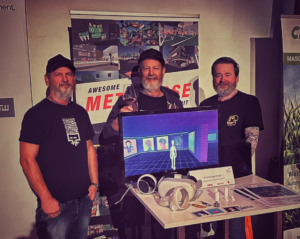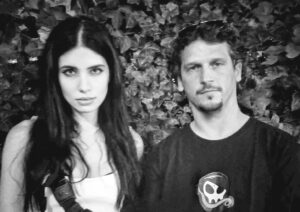I have a problem. I live a double life and have even come to enjoy it. At first, it felt odd and almost dubious when I decided to adopt a second identity. However, after much consideration, it seemed only sensible not to mix my new area of interest with my “real name” (for now),
I want to reveal this new personality when it makes sense to me, when I see an advantage in doing so, or when I feel ready; possibly never or only to a select few. For me, this is more reasonable than being prematurely declared an “Internet persona non grata” by my “friends,” “followers,” and professional “network.” Currently, the spectrum of my virtual existence is divided into these areas: Facebook for all friends and acquaintances (almost a relic of the past), my Instagram account as proof of my hipness, and of course, my professional network via LinkedIn with a smart business photo as a business card; after all, the first impression counts. It gets more personal in the various WhatsApp chat groups. All, quite naturally, always with my first and last name and a matching portrait.
What I did not want was for social media platforms, with all their echo chambers sanctified by algorithms, to determine the jury that ultimately decides whether my new area of interest aligns with my “social” profile. “Is he really talking about Crypto?! Ugh! And Blockchain! Another smart aleck! Speculator!”
It’s like a role-playing game: first, level up properly! Get confident! Learn, learn, learn! But also do, do, do! But in a protected area, so to speak, without (pre)judgments! And is it really so far-fetched to dive into pseudonymity in certain areas of our lives? Only upon second thought does one realize this protective function. After all, in real life, one might not necessarily admit at work that they are the chairman of the “Bachelor Fan Club” (with which I personally would have no problem). But apart from this trivial example, there are far more sensitive areas where it certainly makes sense or would simply be to our advantage. Maybe a bit of pseudonymity on the net wouldn’t harm us all. Of course, not in the sense of feeding the existing echo chambers and hate-filled algorithms further. I believe that every “channel” must be confidently moderated and, if necessary, sanctioned with appropriate severity (I tend to disagree with Mr. Musk on this).
But what does all this stuff, with which you’re once again talking a blue streak, have to do with Crypto? This is easily explained with the currently most common form of NFTs – PFPs or Profile Pictures. While profile pictures date back before the internet, their use as an important part of virtual visual identity has become much more interesting. The current learning curve can be especially seen in the areas of gaming and social media platforms. Thus, the profile picture or avatar is the first “pointer” that gives clues about identity, community belonging, and branding (recognition value), providing an insight into the user and their “online community.” There is an interesting study on this, classifying the relationship between avatar or PFPs and the user as rather bilateral. Test subjects showed an increase in physical strength when they associated themselves with avatars with “stronger” characteristics.¹
At the moment, PFPs dominate the NFT space in terms of market capitalization. Their use as profile pictures arose naturally, as their forefathers, the “CryptoPunks,” were originally minted as generative digital art or collectibles. It was only through the community that the Punks became the calling card of all “cryptonatives” and now all “OGs” (Original Gangsters) in the NFT space – whoever uses a Punk as a profile picture is definitely cryptophilic and has been around since the beginning (or highly values belonging to this community). In many NFT collections, often within the respective community, not only “use” (in connection with Intellectual Property Rights – IPRs) but also “utility” is intensely discussed. Especially during the hype phase in mid-2021, many PFP holders were showered with “perks” in the form of airdrops, physical goods, or special events. Voices increasingly suggested that the “utility” should be the community itself, to refocus on this “social bond.”
In this context, a headline from an article by SuperRare (an NFT marketplace) still resonates in my mind – “Utility isn’t what you get from an NFT project- it’s what you give.” This aligns with the experience I have gathered in a short time. Web3 invites much more participation, quickly motivating one to evolve from a “collector” to a “builder”. The communities I have come to know are very open and “open-minded” – Skin color? Green, because my PFP has the rare attribute “Alien.” Or age? Well, the zombie avatar is likely an older vintage. But even among the collections, “collaboration” often takes precedence over “competition.” This is particularly evident in the current crises that put our society to the test. For example, the community quickly organized a donation campaign following the earthquake disaster in Turkey and Syria, transferring the collected Ether directly to the local wallet. In return, donors receive a “Soulbound Token”² as “Proof of Donation,” and many artists gift individual artworks via airdrop to the holders as a thank you.
A decentralized network likely promotes the idea of solidarity more than a centralized “The Winner takes it all” system. And perhaps we are increasingly realizing that in “theory,” there is enough for everyone if only the distribution is right. This is something we need to work on and lay the foundation for now. WAGMI! – We’re all gonna make it! One of the community’s slogans should definitely carry this deeper meaning, and not just serve as a synonym for rising “floor” prices.
It also suggests that the current status of the WorldWideWeb cannot be the final wisdom. While we had to fight for many of our freedoms that give our identity space in the analog world, we too easily give them up in the virtual space. Our virtual identity is currently a loose collection of database entries by private tech companies, whose control is entirely beyond us (or seems too opaque to us despite the theoretical shield of the GDPR). And this is where the NFTs, trivialized as “JPEGs,” in the form of profile pictures come in, as the first signpost of virtual emancipation. For as absurd as some of these image collections may seem, thanks to the blockchain, they are the user’s property (often equipped with corresponding IP rights); and the communities that gather within and around the individual collections often express a new sovereignty on the net. In Discord channels and Twitter Spaces, plans are discussed, votes are cast using wallets, and roles and tasks are distributed. Democracy on the internet?! Unbelievable but true.
Perhaps we can still make the U-turn and say goodbye to the oligopolies whose algorithms may be maneuvering us into a “Long Night” à la John Robb; perhaps we can still depict our pluralistic society in virtual networks. On the horizon, I can already see (possibly in the form of a hologram) the “Network State” according to Balaji Srinivasan with squinted eyes.
So what should I do with this new, old knowledge now? Currently, it still seems sensible to wear the cloak of pseudonymity, perhaps also to give preference to the “cause” or the “message” rather than the person. But I suspect the time will soon come when it makes sense to throw my personality into the ring; because there is probably more at stake than “just” one’s own “career.” Until then, I’ll remain as HanZzzel and am happy to share my thoughts with you. 🙂
¹ See also the slides from the university course “Non-Fungible Tokens (NFTs) and the Metaverse – Session 3: PFPs” at the University of Nicosia (as of February 2023) and the cited study therein, “Aliens versus humans: Do avatars make a difference in how we play the game?”
² According to the definition, digital identity tokens represent the attributes, characteristics, and achievements of a person or entity.






